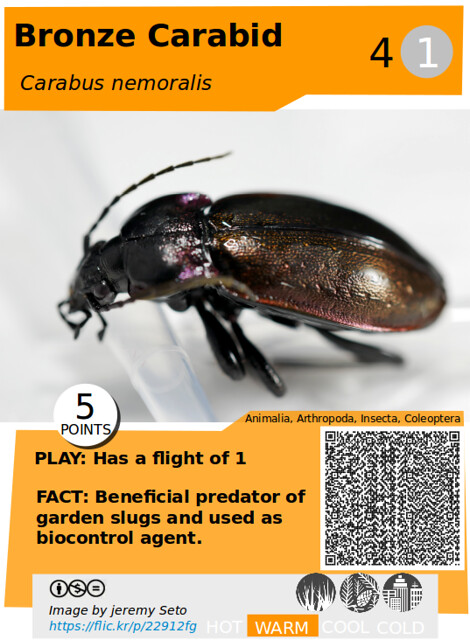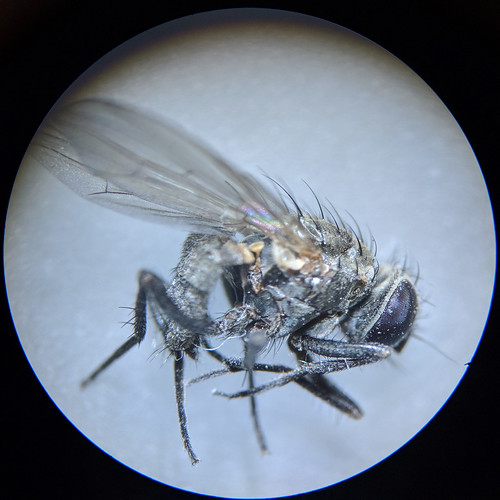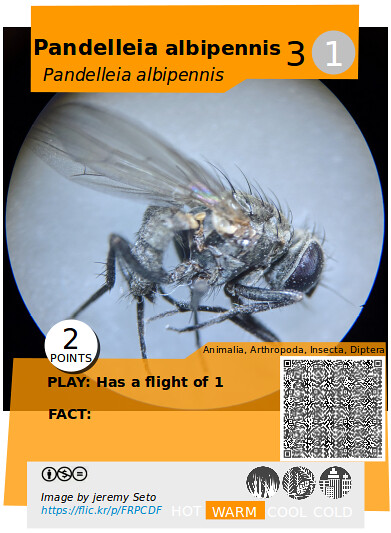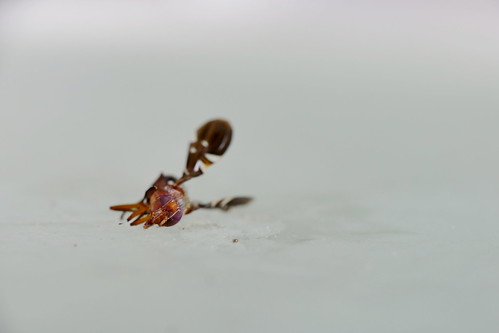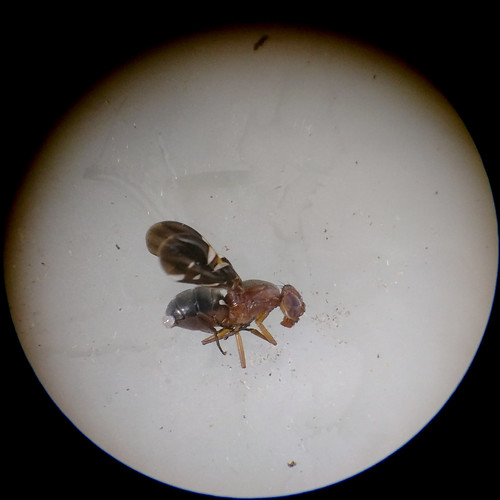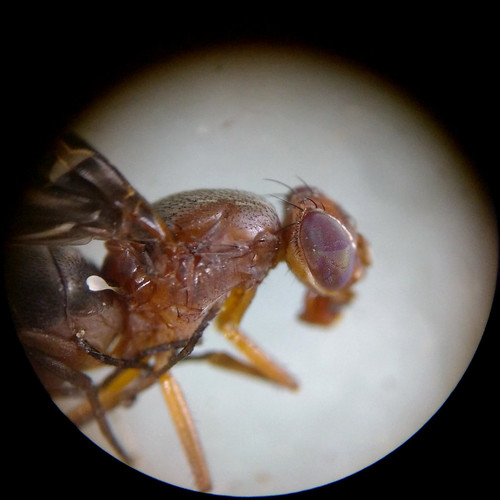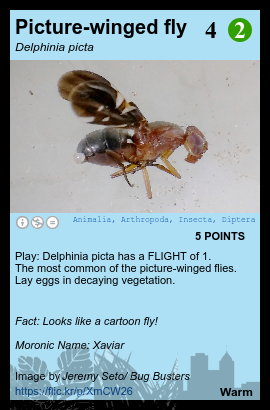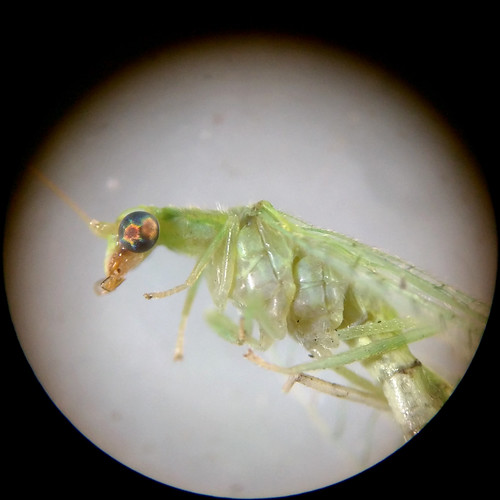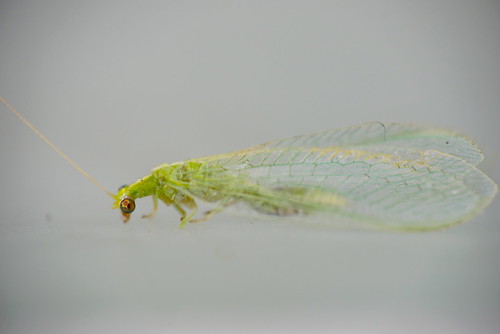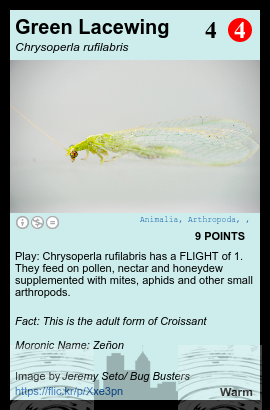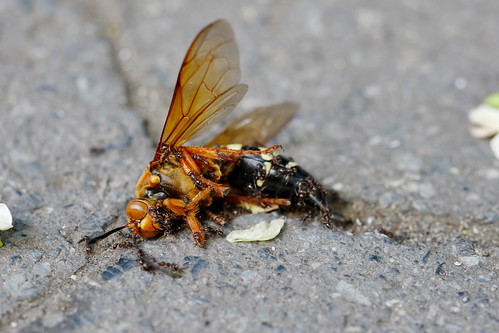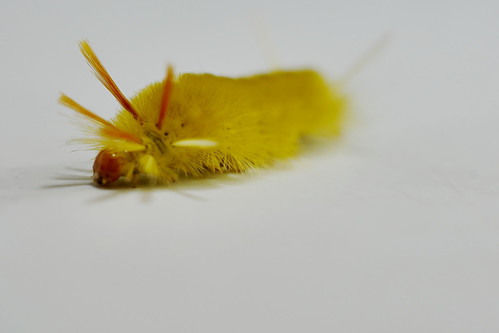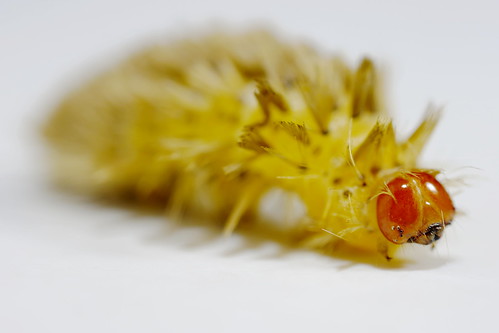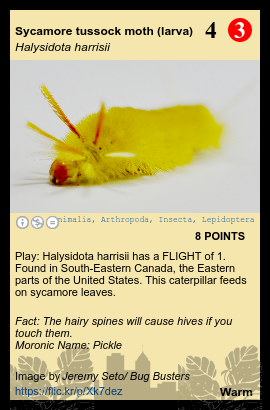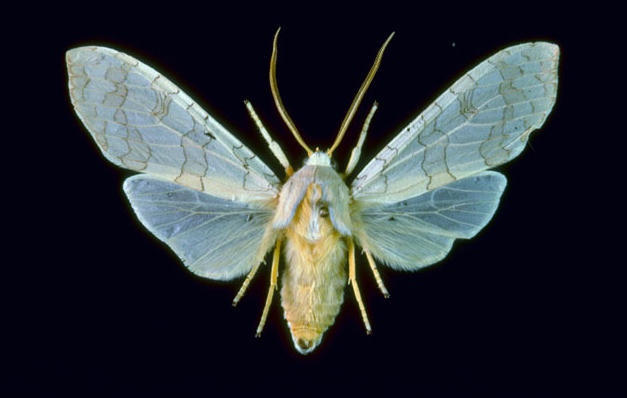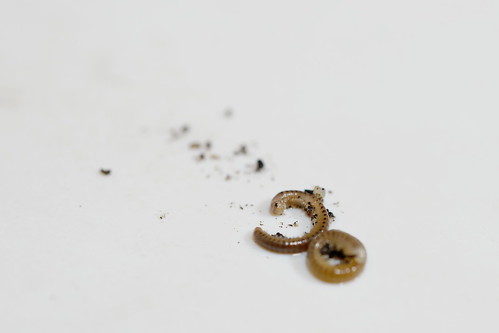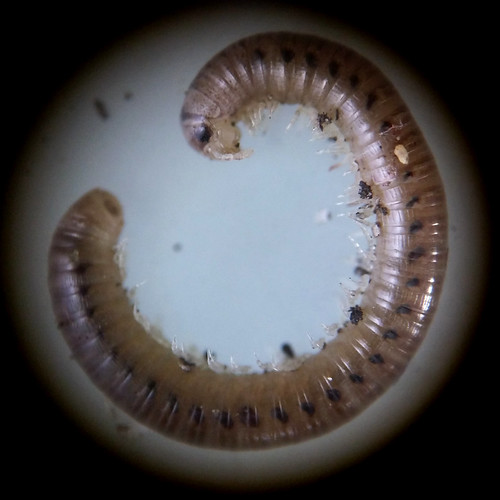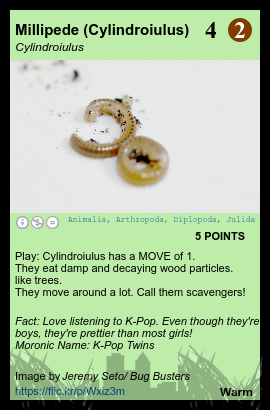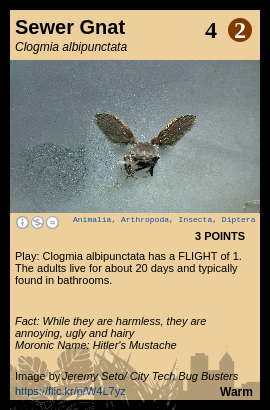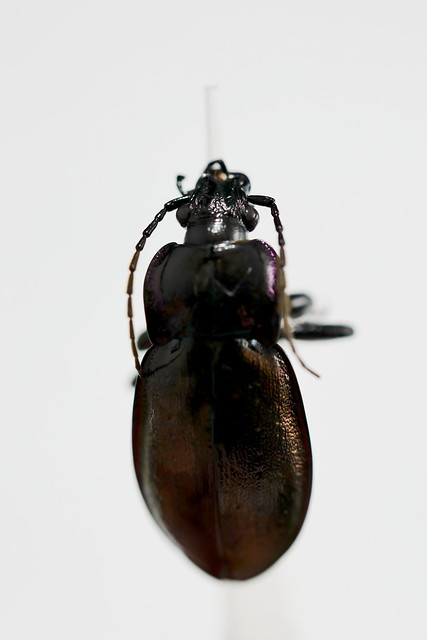
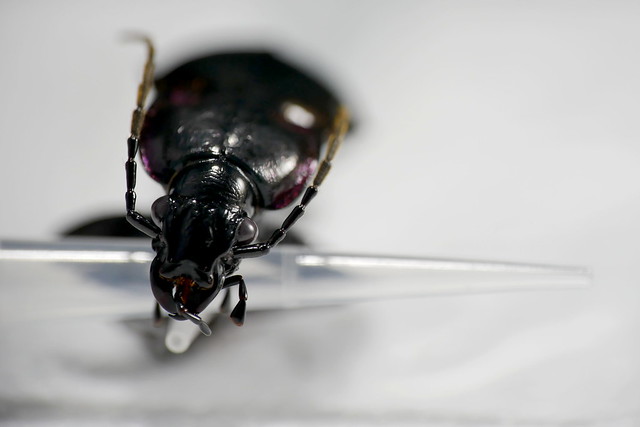
Professor Corbett had an uninvited guest at his house.
Category Archives: bugbusters
Tulsi
Xaviar
Xaviar came in at the end with Zenon. Xaviar looks like a cartoon fly with an enlarged abdomen and snout-like mouth parts. The wings have an interesting white pattern on the dark.
Results
The DNA sequence results indicated that Xaviar is a Picture-Winged Fly of the species Delphinia picta (EOL).
Zeñon
The last of the 26 bugs caught was this green fly with long wings.
Results
Prior to blasting the sequences, a tree was generated to get a rough idea of the relatedness of these bugs. There were 2 leaves on the same branch with no branch distances. We thought we made a mistake and that we submitted the same sample twice. After BLAST, we thought we definitely sent in the same sample twice. But the image search and comparison revealed that this was the adult version of Croissant! This was identified as a Chrysoperla rufilabris.
Queen
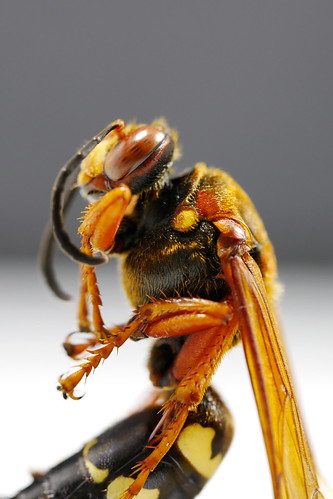
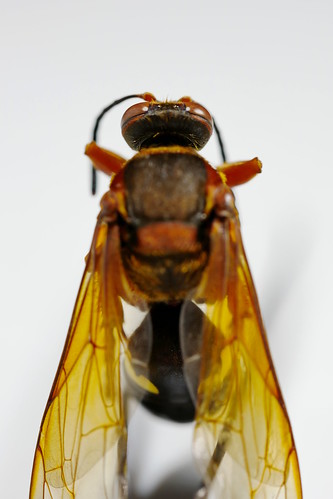

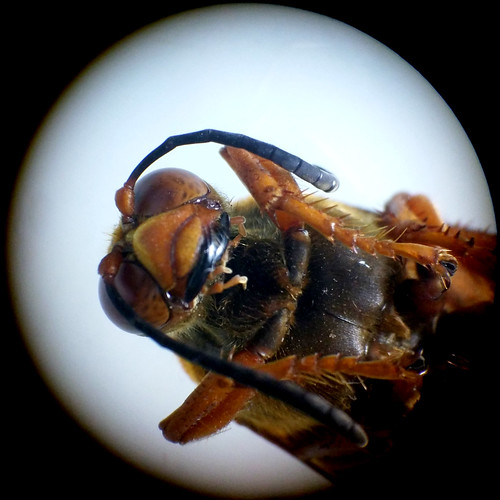
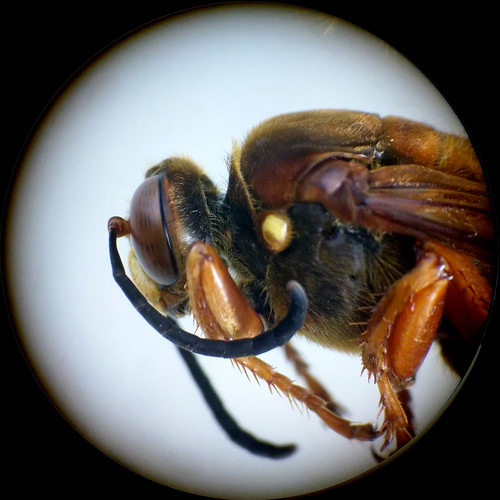
Queen was found dead on the sidewalk at Metrotech. The side-effect was that the body was collected with ants swarming the body. Queen was a large wasp which we could assume was some sort of Cicada Killer Wasp. But we didn’t know the species of the ants and we would like to verify the identity with DNA evidence.
Results
While we were expecting Queen’s sequence to come back as an Eastern Cicada Killer Wasp, given our geography, the sequence said otherwise. The result was Pacific Cicada Killer (Sphecius convallis). This data doesn’t add up and the morphology of Queen is a bit off for this finding.

 Another analysis of the sequences against the ones found in BOLD will be useful. To be continued!
Another analysis of the sequences against the ones found in BOLD will be useful. To be continued!
Pickle
Pickle was found in McLaughlin Park. Clearly, he’s caterpillar of some sort that is destined to be a more recognizable butterfly or moth. He has long orange “hairs” projecting forward in bundles near the anterior end.

Interesting fact about caterpillar eyes is that they have six pairs of simple eyespots (ocelli). Under a microscope, they look like googly eye stickers. These eyespots can detect light but can not resolve an image. These eyes are very different from the pair of compound eyes that are found on the mature butterfly or moth.
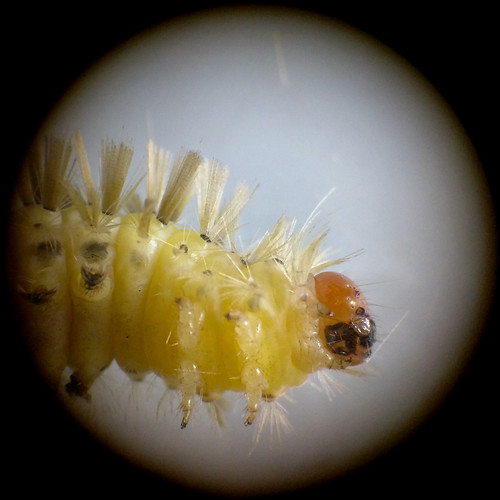
Results
It was revealed from sequencing that Pickle is a sycamore tussock moth (Halysidota harrisii) caterpillar. This caterpillar will make itself at home in our NYC Parks because of the overabundance of London Plane trees. Sycamore Tussock caterpillars are named for their feeding on sycamore trees (Genus Platanus) or which London Planes are hybrids (Platanus x acerifolia). One can compare our sequence with those from BOLD.
Reference
Lightning
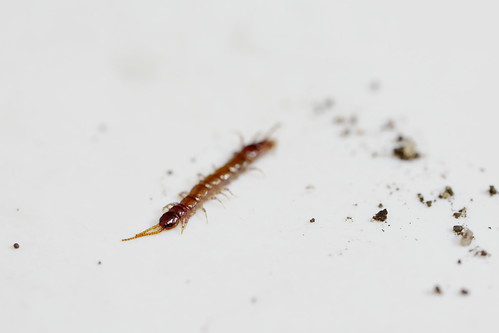
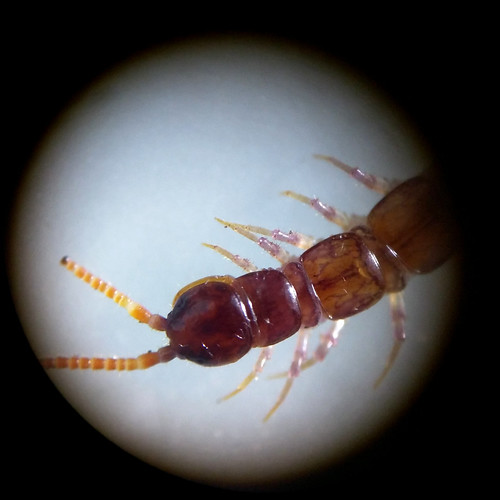
Lightning was found in the dirt in the park. Lightning is very obviously a centipede of some sort with a pair of appendages on each segment.
Results
Lightning was identified as a Stone Centipede (Lamyctes emarginitus). The first appendages can deliver venom to attack spiders and other small invertebrates. These centipedes normally live in a damp environment.

K-Pop Twins
The K-Pop twins were found in some dirt in the park. They were clearly millipedes.
Results
The twins were identified as millipedes from the genus Cylindroiulus. Most similar in sequence to a sample SMTPJ4589 in the BOLD database. They basically associate with decaying wood.
Jigsaw RG
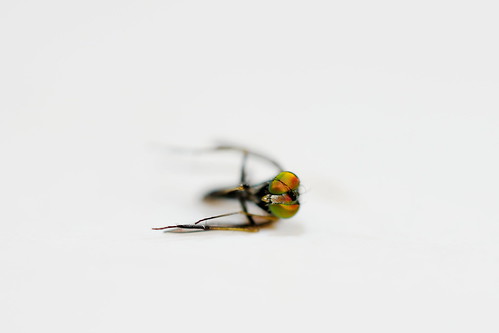
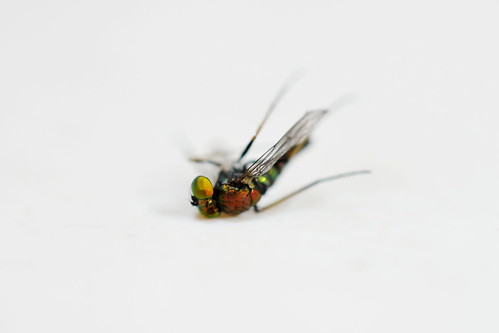
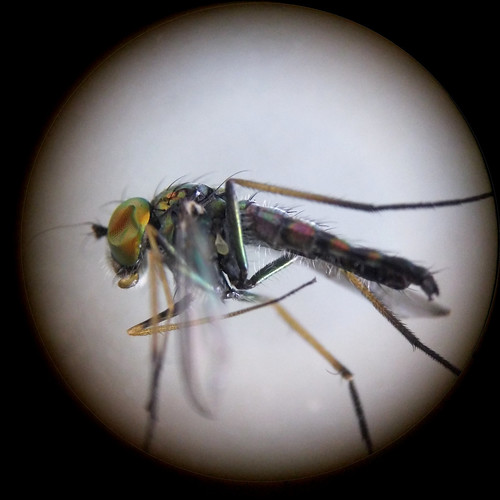
Jigsaw was a small reddish fly. He looked like a red version of Gruncle and Jigsaw was the next name on the list, so he became JigsawRG. The students thought it the red was a sexual dimorphism. It wasn’t until examining Jigsaw under the microscope that we noticed some differences in shape.
Results
It turns out that Jigsaw and Gruncle were indeed related. Both are Long-Legged Flies of the Order of true flies (Diptera) and in the Family Dolichopodidae. While Gruncle was ambiguously identified at the level of Family, Jigsaw’s DNA barcode reveals an identification at the Genus level (Condylostylus). This fly is a predator on smaller arthropods, like mites and fleas. Good to have around!
Hitler’s Mustache
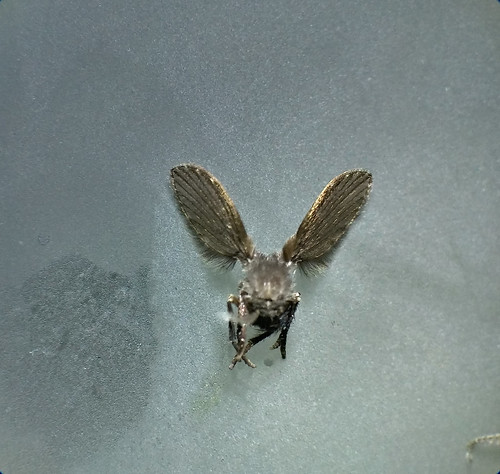
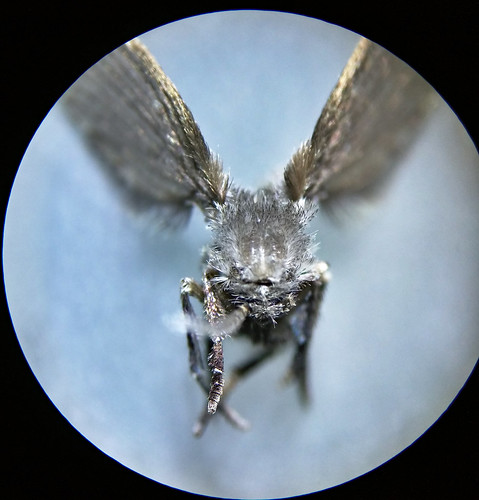
Hitler’s Mustache was found dead on the desk of the Biology Chair. He looks like a hairy moth.
Results
DNA revealed that Hitler’s Mustache was a Drain Fly in the Family Psychodidae. After discovering this, comparison of images points to him being a Clogmia albipunctata or Moth Fly/Moth Midge. The larvae are usually found in bathroom drains, hence the name Drain Fly. While they look like moths, they are true flies in the Order Diptera.

